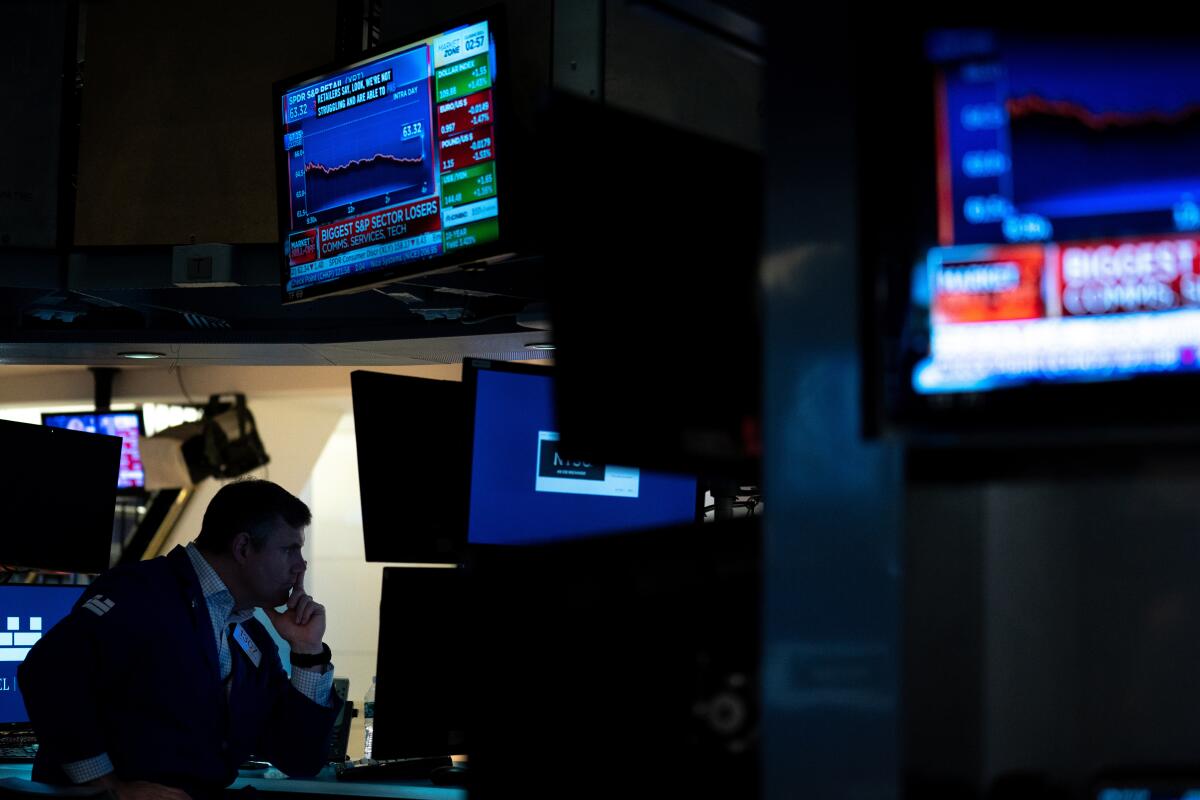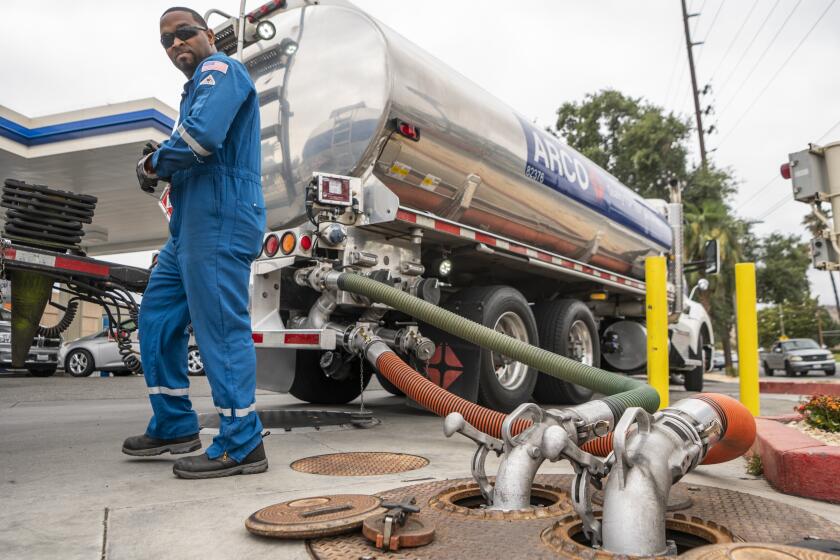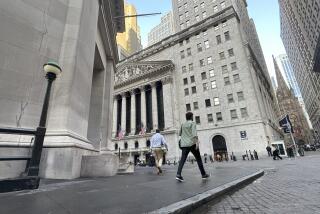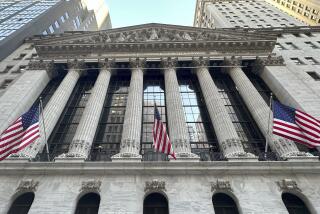Stocks manage to post modest gains after a wobbly day

- Share via
Stocks on Wall Street shook off an afternoon slide and finished modestly higher Wednesday, clawing back some of their losses a day after the market’s worst skid in two years.
The wobbly trading came as investors weighed another snapshot of inflation. Markets have been on edge about the possibility of a recession after a string of interest rate hikes by the Federal Reserve this year as the central bank fights inflation.
The Standard & Poor’s 500 index rose 0.3% after wavering between small gains and losses much of the afternoon. The benchmark index was coming off its biggest drop since June 2020, which ended a four-day winning streak.
The Dow Jones industrial average closed 0.1% higher, while the Nasdaq composite rose 0.7%. Smaller-company stocks also rose, pushing the Russell 2000 to a 0.4% gain.
Bond yields remained relatively stable after leaping higher Tuesday. The yield on the two-year Treasury rose to 3.79% from 3.75% late Tuesday, when it soared on expectations for more aggressive interest rate hikes by the Federal Reserve.
Economically speaking, the vibes are off. Here’s what you should be doing with your money, according to financial experts.
The yield on the 10-year Treasury, which influences rates for mortgages and other loans, held steady at 3.41%.
A report on inflation at the wholesale level showed prices are still rising rapidly, with pressures building underneath the surface, even if overall inflation slowed. It echoed a report on inflation at the consumer level Tuesday, which raised expectations for interest rate hikes and triggered a rout for markets.
Still, the overall decline in inflation at the wholesale level helped assuage fears in the market that inflation at all levels is intensifying, said Quincy Krosby, chief equity strategist for LPL Financial.
“The market would have probably had another round of selling had the headline number been higher,” Krosby said. “The fact that it dipped a bit was helpful for today’s market.”
Traders now see a 1-in-4 chance that the Fed will increase its benchmark rate by a full percentage point next week, quadruple the usual move, according to CME Group. A day earlier, it was closer to a 1-in-3 chance. The company puts the probability of a three-quarter-point increase now at 76%, up from 69% on Tuesday.
The central bank has raised its benchmark interest rate four times this year, with the last two increases by three-quarters of a percentage point.
When organizers of the Future Proof wealth festival decided to create their own event, they took inspiration from Coachella and South by Southwest
The Fed is taking the aggressive action on interest rates in an attempt to cool the hottest inflation in four decades. Tuesday’s report on high prices jolted the market with signs that inflation is entering a more stubborn phase that could require an already resolute Fed to become more aggressive.
Wall Street is especially worried that the rate hikes could go too far in slowing the economy and send it into a recession. The Fed is trying to avoid that outcome, but the latest inflation reports reveal that is becoming a more difficult task.
All told, the S&P 500 rose 13.32 points to 3,946.01, while the Dow added 30.12 points to end at 31,135.09. The Nasdaq advanced 86.10 points to 11,719.68, and the Russell 2000 picked up 6.89 points to close at 1,838.46.
Energy stocks had some of the biggest gains as U.S. crude oil prices rose 1.3%. Exxon Mobil rose 2.5%.
“Today you have some investors coming off the sidelines, coming back into the market because there’s this feeling that the sell-off was a big one, there was a recalibration there, there was a little bit of panic selling there,” said Sylvia Jablonski, chief investment officer at Defiance ETFs.
Sharply lower prices for gas and cheaper used cars slowed U.S. inflation in August, though many other items rose in price.
The broader U.S. economy has been slowing, but consumers have remained resilient and the job market remains strong. Wall Street will get another update on inflation’s latest effects on spending when the government releases its retail sales report for August on Thursday.
The market is also monitoring U.S.-China tensions and the war in Ukraine, while business and government officials are bracing for the possibility of a nationwide rail strike at the end of this week that could paralyze an already discombobulated supply chain.
The railroads have already started to curtail shipments of hazardous materials and have announced plans to stop hauling refrigerated products ahead of Friday’s strike deadline. Businesses that rely on Norfolk Southern, Union Pacific, BNSF, CSX, Kansas City Southern and other railroads to deliver their raw materials and finished products are planning for the worst.
Union Pacific fell 3.7% and Norfolk Southern fell 2.2%.
Biden administration officials are scrambling to develop a plan to keep goods moving if the railroads shut down. The White House is also pressuring the two sides to settle their differences, and a growing number of business groups are lobbying Congress to be prepared to intervene and block a strike if they can’t reach an agreement.
More to Read
Inside the business of entertainment
The Wide Shot brings you news, analysis and insights on everything from streaming wars to production — and what it all means for the future.
You may occasionally receive promotional content from the Los Angeles Times.













